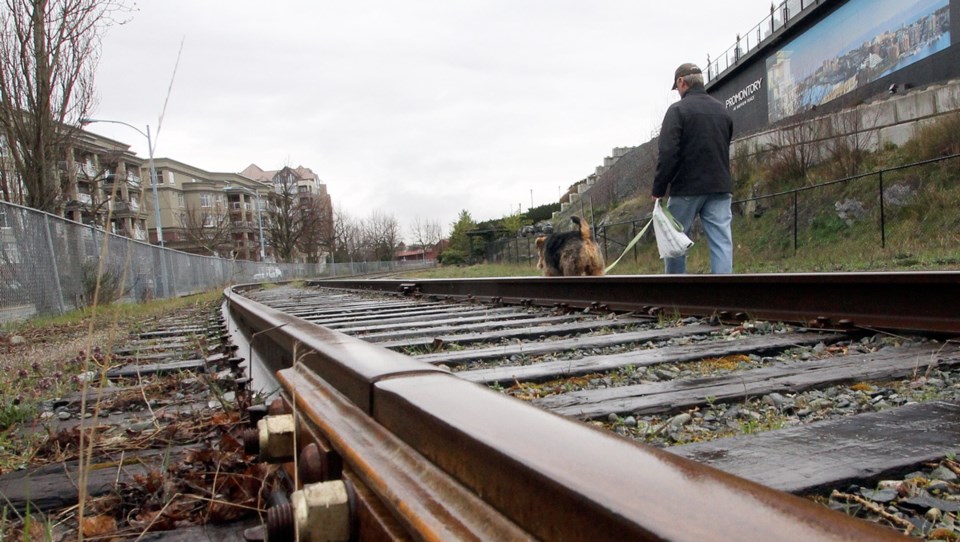Buses, not trains, are the answer to easing traffic gridlock between the West Shore and Victoria, the Ministry of Transportation said Friday, which will come as a disappointment to supporters of a commuter train on the E&N Railway.
Esquimalt Mayor Barb Desjardins and Jack Peake of the E&N Railway Roundtable gathered at Langford’s Station Avenue Friday, along the rail line that last carried a train in 2011, and urged the province to sit down with municipal and federal politicians and First Nations groups to discuss the feasibility of moving people by train to ease congestion.
The Island Corridor Foundation, the non-profit that owns the rail line, said in a letter that provincial government support is key to restoring the railway.
However, the Ministry of Transportation made clear that its top priority for Greater Victoria is making it faster and easier for people to travel by bus.
“Bus lanes along the Trans-Canada Highway are both a more immediate and efficient solution to gridlock, and that is why we are accelerating our work in this area — to make a difference in the daily lives of commuters now,” the ministry said in a statement. “Revitalizing passenger rail on this corridor presents challenges and may not be the easiest or most affordable way to end the gridlock that we see today.”
The province pointed to construction on the Douglas Street bus lane extension that will provide a priority bus lane from Tolmie Avenue to the Burnside Bridge on the busiest bus corridor in the region. A $10-million upgrade is underway on Highway 14 that includes new bus pull-outs and a bus-queue jump lane at Jacklin Road, the ministry said.
Priority bus lanes from Goldstream Avenue to the Trans-Canada Highway on-ramp are also a possibility but the ministry said it first needs to see an analysis conducted by the Victoria Regional Transit Commission, City of Colwood and Town of View Royal.
Speedier and more reliable public transit is key to getting people out of their cars and easing gridlock between the West Shore and Victoria, said Susan Brice, chair of the transit commission and a Saanich councillor. “We feel that’s using our current resources well and will allow our buses to get out of the congestion,” Brice said. “People who are stuck in the congestion might look at the buses and think that looks like a good option.”
Langford Mayor Stew Young is in favour of paving the existing rail line to accommodate buses. Any project involving the rail corridor should be taken out of the hands of the Island Corridor Foundation and controlled by the province, Young said. “We’re supportive of fixing that corridor up and making sure we look long-term for the next 100 year to best utilize that corridor for transportation,” Young said. “Because the other [corridors] are full.”
In November, the NDP government announced it was suspending a study of commuter rail service between the West Shore and Victoria, which was announced by former B.C. Liberal minister Todd Stone in March 2017. The ministry said it determined more consultation is needed with First Nations communities, municipalities and other stakeholders on the future of the E&N rail line.
“We recognize that there is more to do, and that is why we’re prioritizing the funding of bus lanes to create a seamless transportation network that will allow buses to bypass cars sitting in traffic — encouraging more and more drivers to leave their cars at home and choose the faster, greener way — while we work on a long term plan for addressing the E&N line,” the ministry said Friday.
Island Corridor Foundation has said that restoring the line from Victoria to Nanaimo would cost $42.7 million, more than twice its earlier budget for the entire E&N. Fixing the rail lines from Nanaimo to Port Alberni and Courtenay would cost another $52.4 million.
Passenger trains stopped running on the E&N in 2011 because the tracks were deemed to be unsafe.



